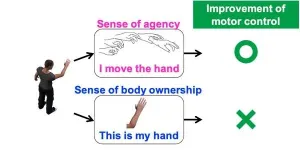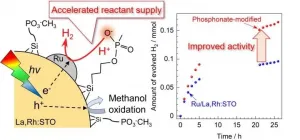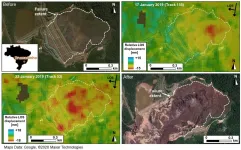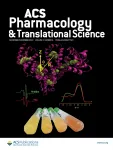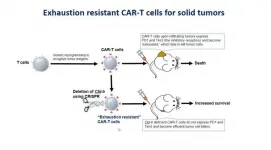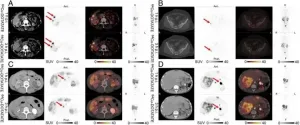Early humans used chopping tools to break animal bones and consume the bone marrow
The toolkit of prehistoric humans
2021-01-21
(Press-News.org) Researchers from the Sonia and Marco Nadler Institute of Archaeology at Tel Aviv University unraveled the function of flint tools known as 'chopping tools', found at the prehistoric site of Revadim, east of Ashdod. Applying advanced research methods, they examined use-wear traces on 53 chopping tools, as well as organic residues found on some of the tools. They also made and used replicas of the tools, with methods of experimental archaeology. The researchers concluded that tools of this type, found at numerous sites in Africa, Europe and Asia, were used by prehistoric humans at Revadim to neatly break open bones of medium-size animals such as fallow deer, gazelles and possibly also cattle, in order to extract the nutritious high-calory bone marrow.
The study was conducted by Dr. Flavia Venditti of the University of Tübingen and Prof. Ran Barkai and Dr. Aviad Agam of the Sonia and Marco Nadler Institute of Archaeology at Tel Aviv University, in collaboration with the Laboratory of Technological and Functional Analyses of Prehistoric Artefacts (Sapienza, University of Rome) and researchers from Sapienza, University of Rome. The paper was published in January 2021 in the PLOS One Journal.
Prof. Ran Barkai: "For years we have been studying stone tools from prehistoric sites in Israel, in order to understand their functions. One important source of tools is Revadim, an open-air site (as opposed to a cave) dating back to 500,000-300,000 years before our time, and rich with remarkably well-preserved findings. Over the years we have discovered that Revadim was a highly favored site, reinhabited over and over again by humans, most probably of the late Homo Erectus species. Bones of many types of game, including elephants, cattle, deer, gazelles and others, were found at the site."
The researchers add that the prehistoric inhabitants of Revadim developed an effective multipurpose toolkit - not unlike the toolkits of today's tradesmen. After discovering the functions of some stone tools found at the site, the researchers now focused on chopping tools - flint pebbles with one flaked, sharp and massive edge. Prof. Barkai: "The chopping tool was invented in Africa about 2.6 million years ago, and then migrated with humans wherever they went over the next two million years. Large quantities of these tools have been found at almost every prehistoric site throughout the Old World - in Africa, Europe, the Middle East and even China - evidence for their great importance. However, until now, they had never been subjected to methodical lab testing to find out what they were actually used for."
The researchers analyzed a sample of 53 chopping tools from Revadim, looking for use-wear traces and organic residues. Many specimens were found to exhibit substantial edge damage as a result of chopping hard materials, and some also showed residues of animal bones, preserved for almost half a million years! Following these findings, experimental archaeology was also applied: The researchers collected flint pebbles from the vicinity of Revadim, manufactured replicas of prehistoric chopping tools and used them to break open bones of dead medium-size animals. Comparisons between the use-wear traces and organic residues on the replicated tools and those on the prehistoric originals significantly substantiated the study's conclusions.
Prof. Barkai: "Early humans broke animal bones in two to extract bone marrow. This requires great skill and precision, because shattering the bone would damage the bone marrow. The chopping tool, which we examined in this study, was evidently outstandingly popular, because it was easy to make, and highly effective for this purpose. This is apparently the reason for its enormous distribution over such a long period of time. The present study has expanded our knowledge of the toolkit of early humans - one more step toward understanding their way of life, tracking their migrations, and unraveling the secrets of human evolution."
INFORMATION:
[Attachments] See images for this press release:
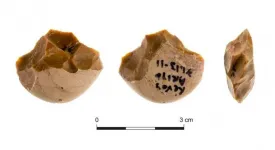
ELSE PRESS RELEASES FROM THIS DATE:
2021-01-21
UV-radiation can affect hormone levels of postmenopausal women negatively and this may contribute to several health issues.
The concentration of oestrogens in the blood affects a woman's health in many ways. For example, oestrogens contribute to a strong bone structure and help wounds heal more quickly:
"When a woman reaches menopause, we see the levels of oestrogens decline and an increase of other hormones, called gonadotropins", says Kai Triebner at the University of Bergen.
For several years, he has studied the hormonal balance of women in relation to menopause: What effects changing hormone levels ...
2021-01-21
With Japan's society rapidly aging, there has been a sharp increase in patients who experience motor dysfunctions. Rehabilitation is key to overcoming such ailments.
A researcher from Tohoku University has developed a new virtual reality (VR) based method that can benefit rehabilitation and sports training by increasing bodily awareness and?improving motor control.
His research was published in the Journal Scientific Report.
Not only can we see and touch our body, but we can sense it too. Our body is constantly firing off information to our brains that tell us where our limbs are in real-time. This process makes us aware of our body and gives us ownership over it. Meanwhile, our ability to control ...
2021-01-21
Water splitting research for solar hydrogen production has focused on physical processes inside the semiconductor, such as light absorption, charge separation, and chemical processes on the surface that are highly complex and rely on the development of new materials. However, processes inside the solution had yet to be thoroughly explored.
One recent approach to improve photocatalytic hydrogen production was proposed by loading phosphonate groups on the surface of the visible-light-responsive photocatalyst lanthanum and rhodium-doped strontium titanate (La,Rh:STO) with a silane coupling agent. The phosphonate functional group functions as a mediator of proton supply (i.e., promotes the supply of reactants) and improves hydrogen production activity.
There have been ...
2021-01-21
Just a few millimetres thick, articular cartilage plays a crucial role in our musculoskeletal system, since it is responsible for smooth (in the truest sense of the word) movement. However, the downside of its particular structure is that even minor injuries do not regenerate. Timely treatment of cartilage damage is therefore essential. Biomaterials are often used to support the cells, their distribution and protection. In most cases, this treatment significantly improves the patient's clinical symptoms but fails to fully restore the cartilage to its original state. The working group led by Sylvia Nürnberger (MedUni Vienna's Department of Orthopedics and Trauma Surgery) ...
2021-01-21
One of Brazil's worst environmental disasters - a dam collapse that also killed more than 200 people - could have been foreseen with the right monitoring technology, according to a new study by the University of Nottingham and Durham University.
The high-profile catastrophe took place on 25 January 2019 at a tailings dam near the Córrego do Feijão iron ore mine, close to the town of Brumadinho, in Minas Gerais state, south-east Brazil.
When the dam collapsed, it caused a torrent of sludge to cover surrounding land; taking lives, destroying homes and livelihoods and polluting rivers with toxic material.
Owned by Vale, Brazil's largest mining company, the tailings dam was ...
2021-01-21
A protein found commonly in human blood might help with the detection of hard-to-diagnose pancreatic tumours. Researchers at Martin Luther University Halle-Wittenberg (MLU), the Alfried Krupp Hospital in Essen and the University of Witten/Herdecke have developed approach using the protein's structure and its function as a proxy for this. In a first study in ACS Pharmacology & Translational Science, the team shows how its method can also be used to differentiate between benign and malignant tumours.
Pancreatic cancer is particularly insidious: "It remains asymptomatic for a long time, which leads to very late diagnoses and therefore a low chance of treating it successfully," says Dr Marcos Gelos from the Alfried Krupp Hospital and Witten/Herdecke University who ...
2021-01-21
DALLAS - Jan. 19, 2021 - Eliminating a single gene can turn exhausted cancer-fighting immune cells known as CD8+ T cells back into refreshed soldiers that can continue to battle malignant tumors, a new study led by UT Southwestern researchers suggests. The findings, published online this week in the Journal for Immunotherapy of Cancer, could offer a new way to harness the body's immune system to attack cancers.
In 2017, the Food and Drug Administration approved treatments involving chimeric antigen receptor T (CAR-T) cells, which consist of immune cells known as T cells that ...
2021-01-21
Reston, Virginia--The imaging time window of 64Cu-DOTATATE positron emission tomography/computed tomography (PET/CT) for patients with neuroendocrine neoplasms can be expanded from one hour to three hours post-injection, according to new research published in the January issue of the Journal of Nuclear Medicine. In a head-to-head comparison of scans performed at the two time intervals, there were no significant differences in the number of lesions detected, and tumor-to-normal tissue ratios remained high in all key organs.
Previous research has demonstrated that 64Cu-DOTATATE PET imaging at one hour post-injection provides excellent lesion detection in patients with neuroendocrine neoplasms. "Given the long half-life and excellent image resolution of 64Cu-DOTATATE, ...
2021-01-21
Successful weight loss is considered to be an integral part of the therapy for type 2 diabetes. Nevertheless, studies keep appearing that question the importance of losing weight. However, new data from a large-scale observational study carried out at DIfE in cooperation with the German Center for Diabetes Research (DZD) support the current recommendations of physicians. The findings, published in the journal Diabetologia, suggest that obesity and weight gain can lead to vascular disorders, the leading cause of disease and death for people with type 2 diabetes.
A close look at vascular disorders
Weight plays a crucial role in the development of type 2 diabetes. However, ...
2021-01-21
Chemical engineers at UNSW Sydney have found a way to make 'green' ammonia from air, water and renewable electricity that does not require the high temperatures, high pressure and huge infrastructure currently needed to produce this essential compound.
And the new production method - demonstrated in a laboratory-based proof of concept - also has the potential to play a role in the global transition towards a hydrogen economy, where ammonia is increasingly seen as a solution to the problem of storing and transporting hydrogen energy.
In a paper published today in Energy and Environmental Science, the authors from UNSW and University of Sydney say that ammonia synthesis was one of the critical achievements of the 20th century. When used in fertilisers ...
LAST 30 PRESS RELEASES:
[Press-News.org] Early humans used chopping tools to break animal bones and consume the bone marrow
The toolkit of prehistoric humans


